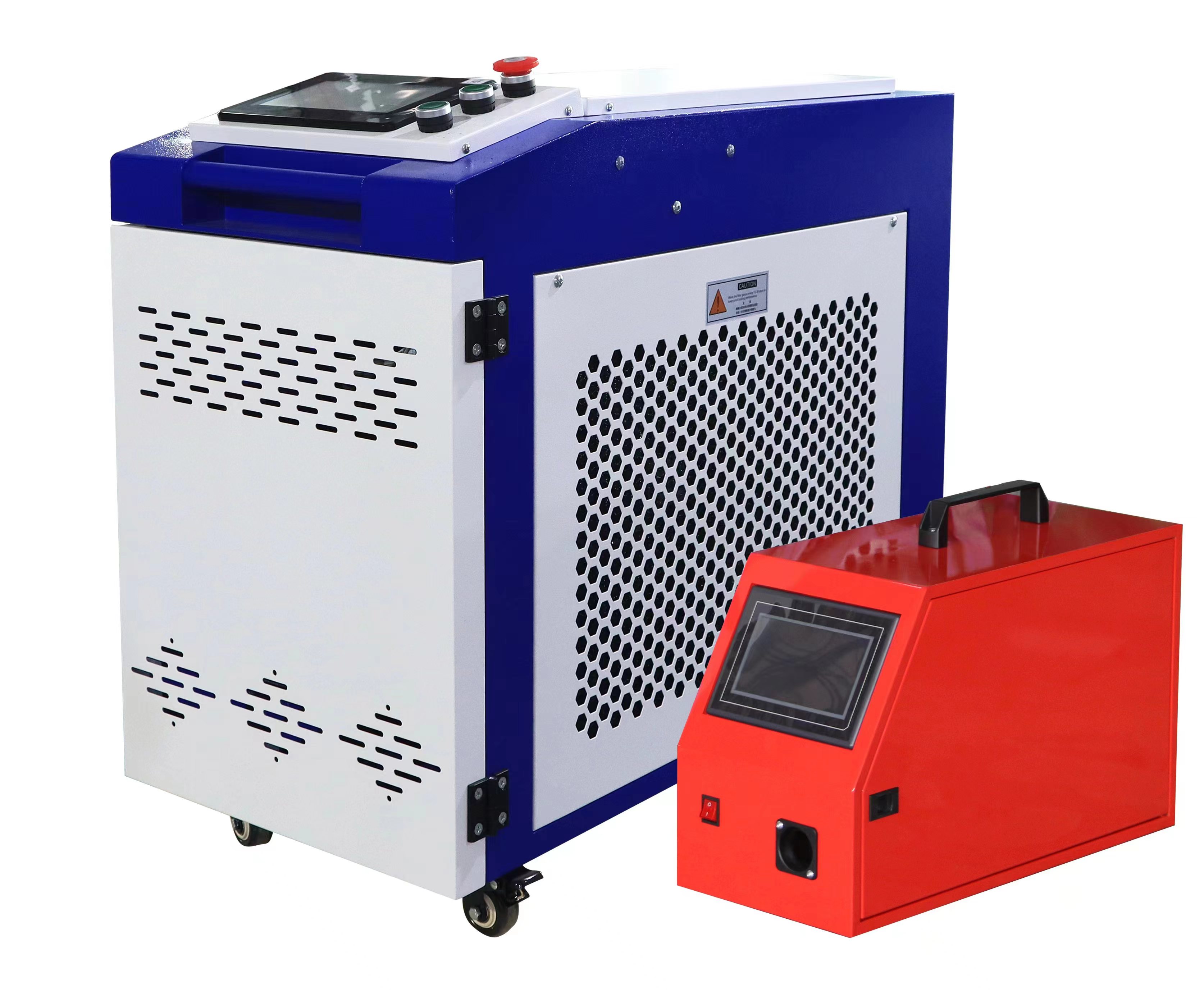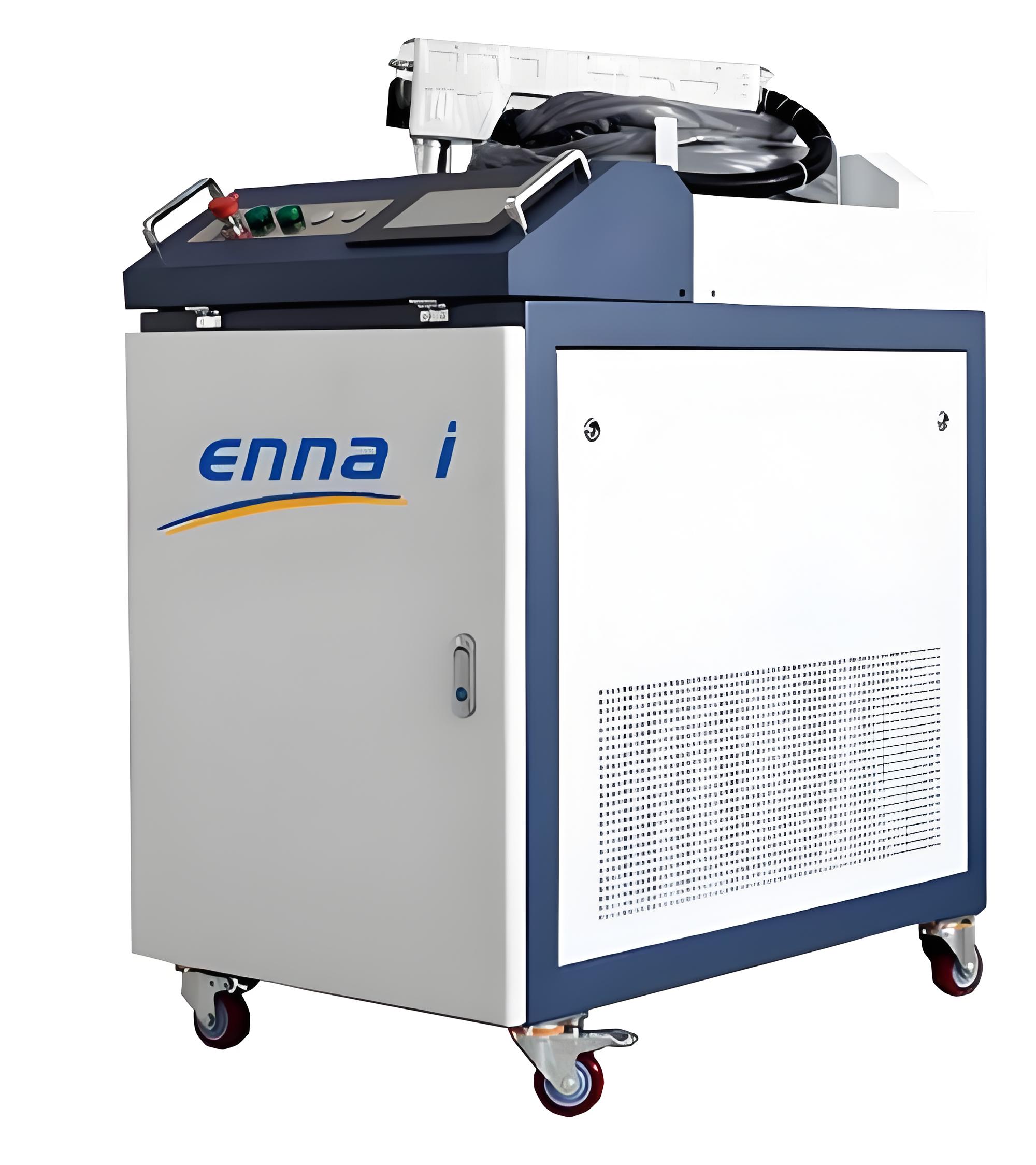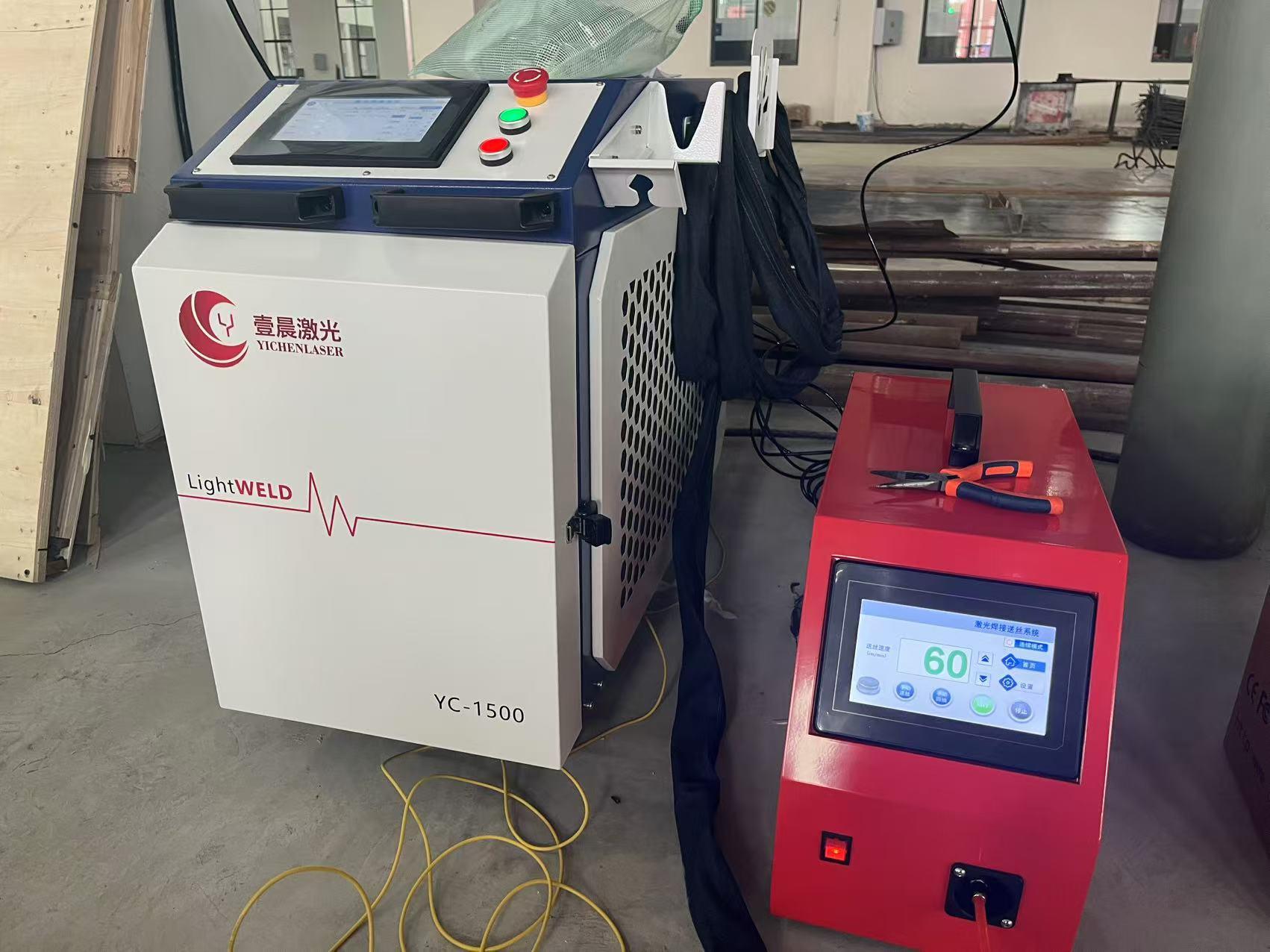Having worked in the industrial surface treatment field for over a decade, I’ve seen technologies come and go, but few have captured my attention like laser rust removal. It’s a game-changer for industries ranging from manufacturing to historic preservation, promising a cleaner, more precise way to tackle corrosion. When people ask, “How far has laser rust removal technology progressed?” they’re usually curious about whether it’s a practical solution for their needs—be it for heavy machinery, delicate artifacts, or even DIY projects. In this article, I’ll walk you through the evolution of laser rust removal, its current state, real-world applications, and what’s on the horizon, all based on my experience and the latest industry developments. My goal is to give you a clear picture of where this technology stands and how it can solve rust-related challenges.

The Basics: What Is Laser Rust Removal?
Before diving into its progress, let’s cover the essentials. Laser rust removal, or laser ablation, uses high-energy laser beams to vaporize rust (iron oxide) from metal surfaces. The laser targets the rust, which absorbs the energy and turns into gas or dust, leaving the underlying metal intact. Unlike traditional methods like sandblasting or chemical treatments, it’s non-contact, eco-friendly, and highly precise, making it ideal for sensitive surfaces.
I first encountered laser rust removal at a trade show in 2015, where a demo unit was stripping rust off a steel plate in seconds. The precision blew me away—no abrasive mess, no toxic chemicals, just a clean surface. Since then, I’ve watched the technology evolve from a niche tool to a mainstream solution.
The Evolution of Laser Rust Removal
Early Days (2000s–2010): Proof of Concept
Laser rust removal started gaining traction in the early 2000s, primarily in research labs and high-end industrial settings. Early systems used Nd:YAG lasers or CO2 lasers, which were bulky, expensive (think $100,000+), and limited to low-power outputs (50-100 watts). They worked well for small, precise tasks—like cleaning aerospace components—but were too slow and costly for widespread use.
I remember visiting a client’s facility in 2008 where they used an early Nd:YAG laser to clean rust off turbine blades. The results were impressive, but the machine took hours to process large parts, and the cost was prohibitive for smaller shops. At this stage, the technology was more of a novelty than a practical solution.

Breakthroughs (2010–2018): Power and Portability
The 2010s marked a turning point. Advances in fiber laser technology brought higher power (100-500 watts), better efficiency, and smaller footprints. Fiber lasers, which use optical fibers doped with rare-earth elements, offered superior beam quality and energy efficiency compared to older systems. This made laser rust removal faster and more accessible.
By 2015, portable handheld laser cleaners hit the market, with brands like P-Laser and CleanLASER leading the charge. These units, weighing 20-50 kg, could be carried to job sites, opening the door for applications in construction, shipbuilding, and automotive repair. I tested a 200-watt handheld unit in 2016 for a client restoring vintage car parts. It stripped rust and paint without damaging the metal, saving hours compared to sandblasting.
However, early portable systems had drawbacks: high initial costs ($20,000-$50,000), limited power for thick rust, and the need for skilled operators. Safety was also a concern, as high-powered lasers require protective gear and controlled environments.
Current State (2018–2025): Maturity and Versatility
Today, laser rust removal has matured into a robust, versatile technology. Here’s where it stands in 2025:
Power Range: Systems now range from 50-watt handheld units for light rust to 2000-watt industrial machines for heavy corrosion. Higher power means faster cleaning—some units can process up to 50 cm²/s for thin rust.
Cost Reduction: Prices have dropped significantly. Entry-level handheld lasers start at $5,000-$10,000, while industrial systems range from $30,000-$100,000. This makes them viable for small businesses and even DIY enthusiasts.
Automation Integration: Automated laser systems, paired with robotic arms or CNC platforms, are now common in manufacturing. I saw a setup at a factory in 2023 where a 1000-watt laser, guided by a robot, cleaned rust off steel beams at 1 m²/min.
Portability and Ease of Use: Modern handheld units are lighter (some under 10 kg) and user-friendly, with touchscreens and preset modes for different surfaces. Training takes hours, not days.
Environmental Impact: Laser cleaning is chemical-free and produces minimal waste (just rust dust, easily vacuumed). This aligns with stricter environmental regulations, making it a go-to for industries like shipbuilding and oil and gas.
Versatility: Beyond rust, lasers now clean paint, grease, oxides, and even graffiti from metal, stone, and wood. I’ve used them on everything from rusty tools to delicate museum artifacts.
One of my favorite projects was in 2024, helping a marine repair shop adopt a 500-watt fiber laser. They were struggling with sandblasting’s mess and damage to ship hulls. The laser cleaned rust in half the time, with no abrasive waste, and the crew loved how easy it was to use.

Key Advancements Driving Progress
Several breakthroughs have propelled laser rust removal to its current state:
Improved Laser Sources: Fiber lasers dominate due to their efficiency, longevity (up to 100,000 hours), and low maintenance. Newer pulsed fiber lasers deliver short, high-energy bursts, minimizing heat damage to the substrate.
Beam Delivery Systems: Advanced optics, like galvanometer scanners, allow precise beam control, enabling complex patterns for large or intricate surfaces. This is a game-changer for automated systems.
Safety Enhancements: Modern systems include interlocks, laser safety enclosures, and real-time monitoring to protect operators. Class 1 enclosures make high-power lasers safe for factory floors.
Software Integration: AI-driven software now optimizes laser parameters (power, speed, pulse frequency) based on surface type and rust thickness. I’ve seen systems that auto-adjust mid-process, boosting efficiency by 20%.
Compact Cooling Systems: Air-cooled or compact water-cooled systems have replaced bulky chillers, making portable units more practical.
Current Applications: Where Laser Rust Removal Shines
Laser rust removal is now used across industries, each leveraging its precision and eco-friendliness:
Manufacturing: Cleaning molds, tools, and machinery without downtime. A client in automotive manufacturing uses a 1000-watt laser to prep steel parts for coating, cutting prep time by 30%.
Marine and Shipbuilding: Removing rust from hulls, decks, and pipelines. Lasers excel in tight spaces where sandblasting is impractical.
Aerospace: Cleaning delicate components like turbine blades without altering tolerances. I consulted on a project where lasers restored vintage aircraft parts to museum quality.
Restoration and Conservation: Preserving historic artifacts, sculptures, and buildings. A museum I worked with used a 100-watt laser to clean a 19th-century iron gate without damaging its patina.
Construction and Infrastructure: Prepping steel beams or bridges for repainting. Lasers eliminate the need for containment systems required by abrasive methods.
DIY and Small Businesses: Affordable handheld units let hobbyists and small shops restore tools, car parts, or antiques.
I recently helped a small restoration shop set up a 200-watt laser for vintage motorcycle parts. The owner was amazed at how it stripped rust and paint without harming chrome details, saving hours of manual work.

Limitations and Challenges
Despite its progress, laser rust removal isn’t perfect. Here are the current hurdles:
Thick Rust: Heavy, flaky rust (over 1 mm) requires multiple passes or higher power, slowing the process. Pre-scraping may be needed for severe corrosion.
Initial Cost: While cheaper than a decade ago, lasers are still pricier than sandblasters or chemical systems for small-scale users.
Surface Limitations: Lasers work best on metals. Non-metallic surfaces like plastic or composites may require different settings or be unsuitable.
Operator Training: Although easier now, operators need basic training to avoid eye damage or improper settings. I’ve seen rookies burn surfaces by cranking power too high.
Speed vs. Scale: For massive structures (e.g., entire ship hulls), lasers are slower than abrasive blasting, though automation is closing the gap.
I faced this in a 2022 project cleaning a rusted bridge. The 1500-watt laser was precise but took days for large sections. We combined it with light abrasive prep for thick rust, cutting time significantly.
The Future: What’s Next for Laser Rust Removal?
Looking ahead, laser rust removal is poised for even greater adoption. Based on industry trends and my discussions with manufacturers, here’s what’s coming:
Higher Power Systems: 3000-5000-watt lasers are in development, promising faster cleaning for large-scale industrial use.
AI and Automation: Smarter systems will use machine vision to detect rust and adjust parameters in real time, reducing operator input.
Lower Costs: As fiber laser production scales, entry-level units could drop below $3,000 by 2030, making them accessible to hobbyists.
Portable Powerhouses: Battery-powered handheld lasers are emerging, ideal for remote sites without power sources.
Multi-Material Applications: Research is expanding laser use for composites, ceramics, and hybrid materials, broadening its scope.
I’m particularly excited about AI integration. At a 2024 expo, I saw a prototype that scanned surfaces and optimized laser settings on the fly. It’s not yet commercial but could revolutionize large-scale projects.

Practical Tips for Using Laser Rust Removal
If you’re considering or using laser rust removal, here’s what I recommend based on experience:
Choose the Right Power: For light rust or small parts, a 100-200-watt laser suffices. Heavy rust or large surfaces needs 500-1000 watts.
Test Settings First: Start with low power and high speed to avoid overheating. Adjust based on rust thickness and material.
Prioritize Safety: Always wear Class 4 laser safety glasses and ensure proper ventilation to handle rust dust.
Maintain the System: Clean optics regularly and check cooling systems to prevent downtime. I’ve seen neglected lenses reduce efficiency by 20%.
Combine Methods: For thick rust, use manual scraping or light blasting before lasering to speed up the process.
Here’s a laser rust removal settings guide for common scenarios:
| Rust Type | Power (Watts) | Speed (cm²/s) | Notes |
|---|---|---|---|
| Light Rust (<0.1 mm) | 50-200 | 20-50 | Use pulsed mode for precision |
| Medium Rust (0.1-0.5 mm) | 200-500 | 10-30 | Increase power for faster cleaning |
| Heavy Rust (>0.5 mm) | 500-1000 | 5-15 | Pre-scrape thick layers if needed |
| Paint + Rust | 300-1000 | 5-20 | Adjust for paint thickness |
Real-Life Case: Turning Rust to Shine
Last year, I consulted for a shipyard struggling with rust on steel pipelines. They relied on sandblasting, which was messy and damaged nearby equipment. We introduced a 1000-watt fiber laser with a robotic arm. After dialing in settings (800 watts, 10 cm²/s), it cleaned 50 meters of pipe in a day—twice as fast as blasting, with no cleanup needed. The crew was skeptical at first but became converts after seeing the results. The system paid for itself in six months through labor and waste savings.
This project showed me how far laser rust removal has come—it’s not just about cleaning; it’s about transforming workflows.

Final Thoughts
Laser rust removal has evolved from a high-cost novelty to a practical, eco-friendly solution that’s reshaping industries. With powerful fiber lasers, portable designs, and AI-driven automation, it’s more accessible and efficient than ever. Whether you’re restoring a classic car, maintaining factory equipment, or preserving a historic artifact, this technology can save time, money, and hassle. As costs drop and power increases, I expect it to become a staple in workshops and factories worldwide. If you’re curious about adopting laser rust removal or have a specific rust challenge, share it below—I’d love to offer tailored advice!
Related Questions and Answers
1. Is laser rust removal safe for all metals?
Yes, for most metals (steel, aluminum, copper), as lasers target rust without damaging the substrate. Test settings on delicate metals like thin aluminum to avoid overheating.
2. How does laser rust removal compare to sandblasting?
Lasers are more precise, eco-friendly, and produce no abrasive waste, but they’re slower for thick rust or large areas. Sandblasting is cheaper upfront but messier and less precise.
3. Can I use a laser to remove rust and paint together?
Yes, lasers can remove both with adjusted settings. Use higher power (300-1000 watts) and slower speeds for paint, as it’s denser than rust.
4. Are handheld laser rust removers worth it for DIY projects?
For small-scale projects like tools or car parts, a 100-200-watt handheld laser is cost-effective ($5,000-$10,000) and easy to use, especially compared to manual sanding.
5. How do I maintain a laser rust removal system?
Clean optics weekly, check cooling systems monthly, and store in a dry environment. Regular maintenance extends laser life and ensures consistent performance.






